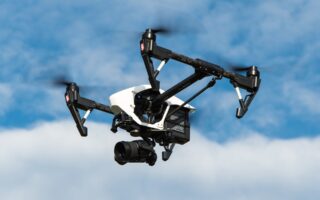In the last decade, the world of filmmaking has experienced a significant shift in camera technology. With the advent of digital cameras, such as the ptz camera, the industry has seen a surge of innovation that has given filmmakers the tools they need to create stunning visuals and tell compelling stories. Here are some of the most notable camera innovations for filmmakers in the last 10 years:
1. 4K and beyond:
 In 2011, RED introduced the RED Epic, a 5K camera that ushered in a new era of high-resolution filmmaking. Since then, cameras with 4K resolution and beyond have become more common, giving filmmakers the ability to capture stunning detail and clarity in their images. This increase in resolution has also allowed for more flexibility in post-production, as filmmakers can now crop and zoom in on their footage without losing image quality.
In 2011, RED introduced the RED Epic, a 5K camera that ushered in a new era of high-resolution filmmaking. Since then, cameras with 4K resolution and beyond have become more common, giving filmmakers the ability to capture stunning detail and clarity in their images. This increase in resolution has also allowed for more flexibility in post-production, as filmmakers can now crop and zoom in on their footage without losing image quality.
2. High Dynamic Range (HDR):
 High Dynamic Range (HDR): HDR technology allows cameras to capture a wider range of brightness levels, resulting in more vivid and realistic images. Cameras such as the Sony A7S III and the Blackmagic Pocket Cinema Camera 6K Pro now feature HDR capabilities, giving filmmakers even more creative control over their images. HDR technology also allows for more natural-looking lighting in scenes with high contrast, such as outdoor shoots.
High Dynamic Range (HDR): HDR technology allows cameras to capture a wider range of brightness levels, resulting in more vivid and realistic images. Cameras such as the Sony A7S III and the Blackmagic Pocket Cinema Camera 6K Pro now feature HDR capabilities, giving filmmakers even more creative control over their images. HDR technology also allows for more natural-looking lighting in scenes with high contrast, such as outdoor shoots.
3. Mirrorless cameras:
 Mirrorless cameras: Mirrorless cameras have become increasingly popular in recent years, offering filmmakers a smaller, lighter alternative to traditional DSLR cameras. The Sony A7 series and the Panasonic GH series are two examples of mirrorless cameras that have gained popularity among filmmakers. These cameras are often more affordable than their DSLR counterparts, making them accessible to filmmakers on a tighter budget.
Mirrorless cameras: Mirrorless cameras have become increasingly popular in recent years, offering filmmakers a smaller, lighter alternative to traditional DSLR cameras. The Sony A7 series and the Panasonic GH series are two examples of mirrorless cameras that have gained popularity among filmmakers. These cameras are often more affordable than their DSLR counterparts, making them accessible to filmmakers on a tighter budget.
4. Gimbal stabilization:
 Gimbal stabilization: The introduction of gimbal stabilizers has revolutionized the way filmmakers capture footage. These devices allow for smooth, stable camera movement and have become a staple in many filmmakers’ toolkits. The DJI Ronin and the Zhiyun Crane are two examples of popular gimbal stabilizers that are widely used in the industry.
Gimbal stabilization: The introduction of gimbal stabilizers has revolutionized the way filmmakers capture footage. These devices allow for smooth, stable camera movement and have become a staple in many filmmakers’ toolkits. The DJI Ronin and the Zhiyun Crane are two examples of popular gimbal stabilizers that are widely used in the industry.
5. Drones:
Drones have opened up new possibilities for filmmakers, allowing them to capture aerial footage that was previously impossible or cost-prohibitive. DJI has become a leading manufacturer of drones for filmmakers, with products such as the Phantom and Mavic series. Drone footage can add a unique perspective to a film, giving viewers a bird’s-eye view of a scene or location.
6. Virtual and augmented reality:
Virtual and augmented reality: Virtual and augmented reality have become increasingly popular in recent years, and camera technology has evolved to meet the demands of these new mediums. Cameras such as the Insta360 Pro 2 and the Kandao Obsidian R offer filmmakers the ability to capture 360-degree footage for VR experiences. This type of footage can be used to create immersive experiences that put the viewer right in the middle of the action.
Overall, the last decade has seen a significant shift in camera technology for filmmakers, with innovations such as 4K resolution, HDR, mirrorless cameras, gimbal stabilization, drones, and virtual and augmented reality. These advancements have given filmmakers more creative control and opened up new possibilities for storytelling through visuals. As camera technology continues to evolve, it will be exciting to see what new innovations will be introduced in the years to come.






















